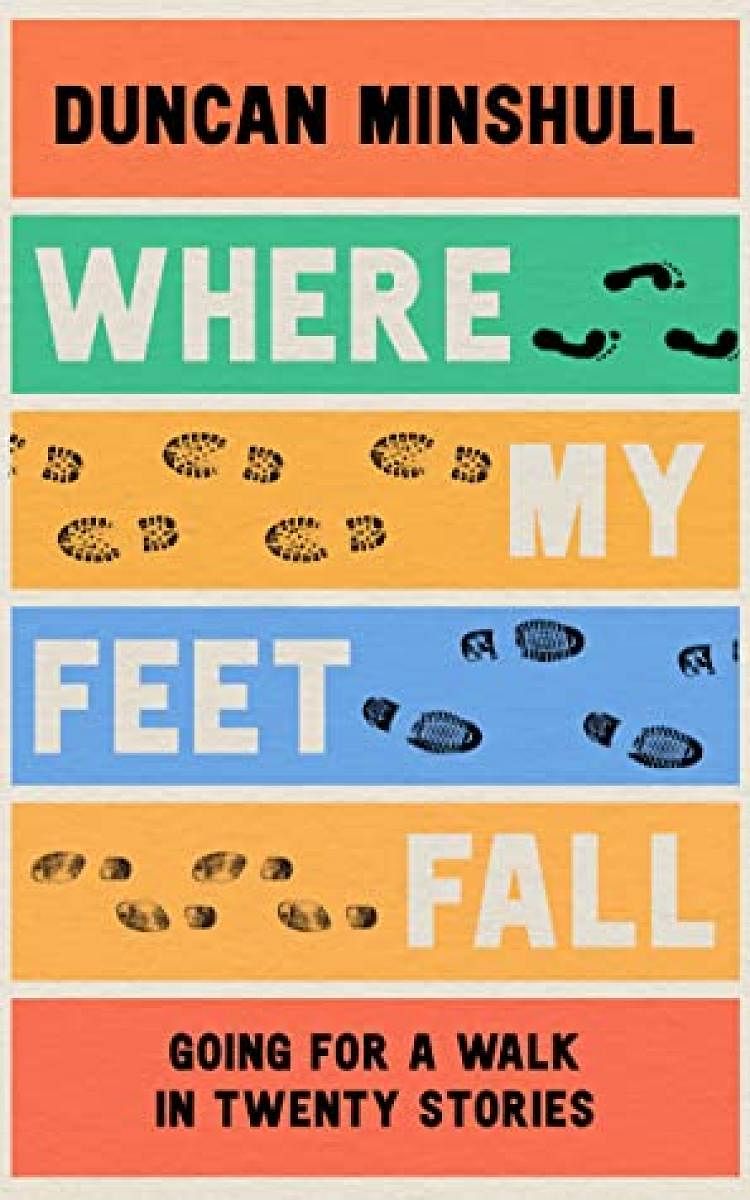
This collection of walking stories quite lives up to the book’s irresistible title. All 20 contributors, including some names familiar to readers in the subcontinent like Pico Iyer, Kamila Shamsie and Keshava Guha, write crisp pieces on where their feet fall by routine, with deliberation, when getting over the reluctance to walk... pieces that will resonate with every reader who pulls on their sneakers/keds/trainers and heads out for their morning or evening constitutional.
Editor Duncan Minshull, in his introduction, harks back to walks taken by Petrarch, William Hazlitt (who told readers in an essay that it was best to venture out alone because ‘our friends talk a lot and block the views’), Virginia Woolf, Charles Dickens and other writers. He states that the 20 contributors here were either compulsive walkers who put walking at the centre of their work (he calls them walker-writers) or those whose feet hadn’t crossed any pages till now. Willy-nilly, an inner journey becomes integral to the experience, and the result is thought-provoking pieces of writing.
And so, you have writers writing about attiring themselves more for the weather than the walk (no tight Lycra for them, thank you); mental scrimmages with the anti-walking inertia; walking the Camino despite not having religion and emptying one’s mind and focusing entirely on the act of walking.
It is also about how landscapes help create our metaphorical progressions in that the more forceful their effect on our bodies, the deeper their impact on our minds; and the ‘joys’ of packing a walking kit with water bottles, foldable cutlery, power bars, down jackets, gloves, first-aid kit, sunscreen, torch, etc.
Inhabit the imagination
Yet others write of walking as climbing, as in Scotland, to look about, breathe piney air, search for red squirrels.
Iyer references veteran walkers like Henry David Thoreau, P G Wodehouse, Philip Roth, and John le Carre, pointing out that the act of walking allows us to inhabit our imagination entirely.
Speaking of himself, he says that on his 40-minute walk, ideas and sentences build to such a climax that once he’s back home, whole essays tumble out.
Keshava Guha avers that walking in the Delhi locality of GK — and being hugged by a husky every day — has him seeing more sharply, his curiosity growing more acquisitive. Shamsie takes a walk down her street in a city that wasn’t made for walking, her hometown Karachi, and tells us of the things
she observes, and of walking friendships.
Jessica J Lee speaks for a lot of us when she says that her walking path lodged love deep in her heart, and walking there, she made out that love hung amidst beech leaves and stood waiting between pines.
Harland Miller has a side-splitting yet poignant tale of walking like professional walkers, bum-waggle et al, and how it usually elicited hearty laughs from onlookers.
Will Self takes readers on a walk through the Isle of Grain with its verdant landscape, estuaries, churches and streams.
Agnes Poirier makes a challenging statement that walking is a profoundly European experience. As a counterpoint, Sinead Gleeson goes walking in the writer Maeve Brennan’s footsteps in New York City, a place where you can create your own narrative.
And in the end, the reader realises that walking is a primaeval act, whether you live in a city or out in the country, and that it is essential in American naturalist John Burroughs’ words, to take the same path you took yesterday. That flânerie on foot is actually a truly remarkable action.
By the time the reader finishes the book, it is time for them to take a walk, this time with new insights into the wonders of walking.